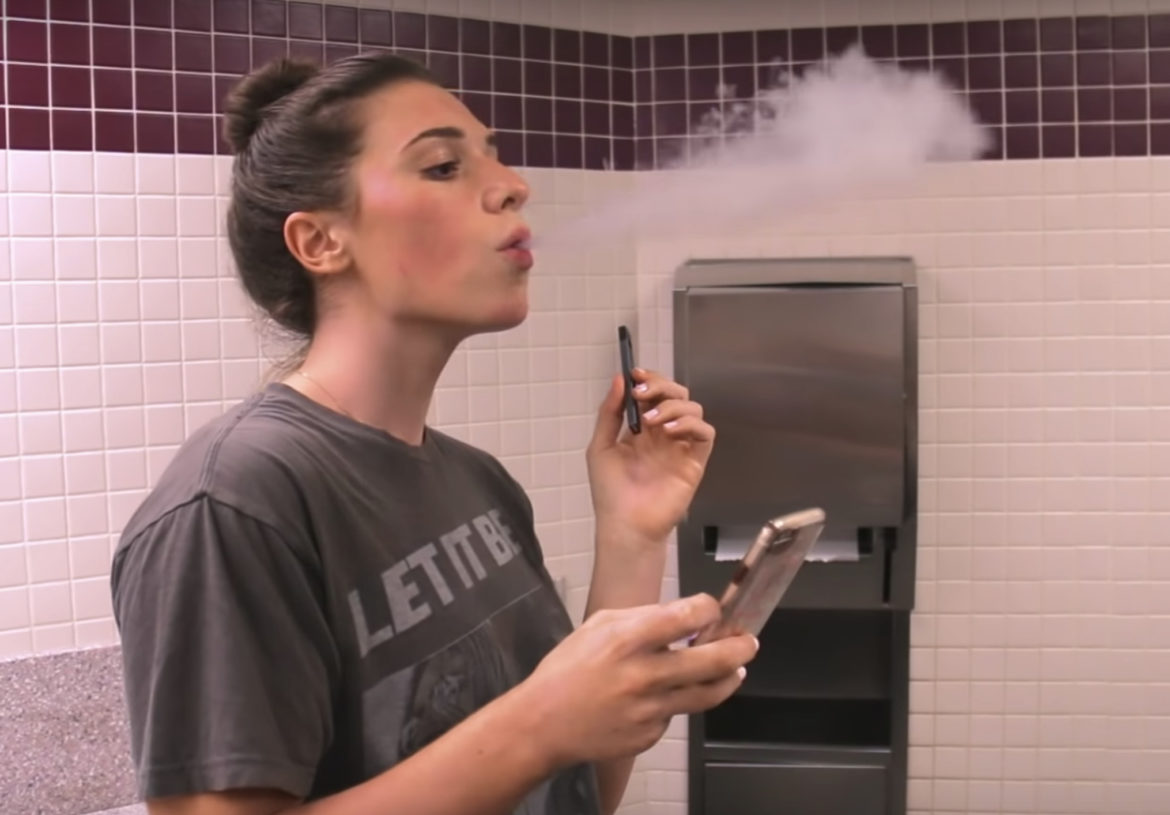Every three minutes in American schools, an undiscovered issue is exposed The student was caught vaping. Public health experts label the teen vaping epidemic a complete crisis, with the CDC saying that more than 40 percent of high school students and 20% of middle schoolers have had a go at electronic cigarettes. A majority (99 percent) of them have nicotine, an addictive chemical which alters the brain’s wiring and serves as a gateway to smoking cigarettes. Teachers, parents and administrators are under increasing pressure to do something. Vape detectors are an advanced technological tool that is quickly becoming a necessity for every campus. Triton, and 3D Sense are the two most advanced vape detectors schools can utilize. They do more than make an alarm sound.

How do Vape Detectors work: Precision without Intrusion
Modern vape smoke sensors like the Triton ULTRA Smart Safety sensors does not rely on audio or cameras to ensure privacy and security, while offering useful information. The device makes use of advanced particulate sensor technology to analyse the air in near-real time. If vape aerosols, cigarettes smoke, marijuana vapor or masking agents (like heavy perfumes) are detected it sends instant alerts via text or email to a designated team. False positives are extremely low. Administrators can be assured that all notifications require immediate attention.
One unit covers a complete space bathroom, locker or hallway, making installation affordable. In the first five weeks after installing, Triton customers typically report an increase in the amount of vaping they do. The reason? Data-driven deterrence. The Triton Cloud Dashboard displays “hotspots” that are where vaping is most frequent and at what time. This allows principals to guide hall monitors as well as security personnel in the areas where they are needed.
Beyond Detection: Visualization of Occupancy and Loitering Control
Triton’s patent pending technology of occupancy visualization differentiates it from other vape sensors. The ULTRA Sensor monitors dwell time without capturing any images or sounds. Administrators are able to view heat maps colored by color showing when bathrooms turn into social hubs that are prime for smoking and long-term close contact that can spread respiratory illnesses.
Stanford Medicine research underscores the stakes: students who vape are five times more likely to contract COVID-19. Through reducing congregation the vape community, these devices help improve air quality and reduce the risk of transmission for the airborne pathogens. Following the outbreak the devices have gained importance due to their dual advantages.
Converting data into discipline and Dialogue
Numbers can tell a story. The reports module in Triton’s software provides the quantitative proof of incidents’ timestamps and locations. It also reveals patterns in frequency. Schools can provide the information to the school board, parent groups and even students. If a school’s campus has a 60% reduction in detections following detector rollout there is a gradual loss of doubt. Parents will be able to see that the students are focused; they are also aware of the consequences.
Educators amplify impact by announcing the presence of vape detector from day one. The 3D Sense model, for instance, explicitly markets itself as a deterrent. It is suggested that students be aware that air surveillance is constantly on. Peer accountability is the next step: The social costs that comes with setting off an alarm often proves to be far more potent than giving a lecture.
A Multi-Front Strategy Schools Can’t Ignore
Vape detectors won’t stop people from smoking by themselves, but they’re a component of a broader solution.
Monitoring – Real-time alerts catch incidents that are in the process of being resolved.
Education – Research-based reports are the basis for curricula against smoking.
Deterrence: Visible signs and consequences that are known can influence behavior.
Discipline – Hotspot data justifies targeted enforcement.
Support Schools can pair detections with cessation resources for students who are struggling.
The CDC stresses that changing this trend requires “buy-in” from educators, parents, and society. Vape detectors offer the missing link: instant, objective feedback that transforms good intentions into tangible results.
Deployment It’s Easy
Triton Cloud Dashboard makes it simple to sign up your devices. Administrators can add contacts, customize notifications rules, and establish alert thresholds. One demo will show you how simple it is. You can set up an appointment to see live hotspot maps and graphs in motion.
Conclusion
Every puff you don’t take is a risk to an addiction that lasts for a lifetime. Every unnoticed bathroom gathering is a threat to both health and safety. Vape detectors such as 3D Sense and Triton for schools are more than monitoring. They also deliver intelligence as well as discouragement and proof of advancement. Campuses who install them aren’t merely reacting to the growing vaping problem and are now gaining control.
With just one sensor for every space, privacy-safe insights into occupancy and alarm systems for rapid alerts, these devices transform nagging concerns into real-world victories. In an era where 40% of high schoolers have already experimented and middle-school figures are growing daily, waiting is not an option anymore. You’re the first person to learn what the atmosphere in your school is declaring.